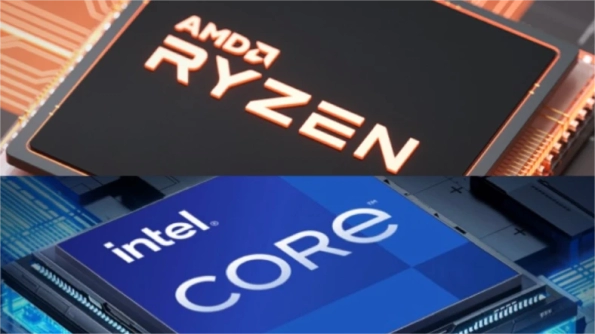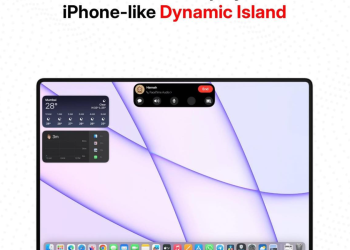In today’s dynamic creative landscape, selecting the right content creation CPU is paramount. Whether you’re editing 8K video, animating in Blender, or managing massive Photoshop layers, your CPU dictates how efficiently your software performs. This article compares Ryzen vs Intel editing performance to determine which creator CPU is best suited for professionals in 2025.

The Role of a CPU in Content Creation Workflows
In content creation, CPU performance impacts:
-
Rendering speeds
-
Video timeline playback smoothness
-
Real-time effects and filters
-
Multithreaded processing for encoding and exporting
Creative software like Adobe Premiere Pro, DaVinci Resolve, After Effects, Blender, and Unreal Engine are heavily CPU-bound, especially during export or simulation tasks. Therefore, choosing the optimal creator CPU improves not only speed but also productivity.
Architecture Comparison: AMD Ryzen vs Intel Core
AMD Ryzen 7000 Series
-
Built on 5nm Zen 4 architecture
-
Features AM5 socket with DDR5 and PCIe 5.0 support
-
Offers 3D V-Cache models for improved data locality
-
Ideal for multithreaded rendering and cache-sensitive workflows
Intel 14th Gen (Raptor Lake Refresh)
-
Intel 7 process (10nm ESF) with hybrid architecture (P-Cores + E-Cores)
-
LGA 1700 platform with DDR5/DDR4 compatibility
-
Strong single-thread performance, great for real-time editing
-
Higher power draw, but excellent boost frequencies
Benchmarking the Top Creator CPUs (2025)
| CPU Model | Cinebench R23 Multi | Premiere Pro Export (4K) | Blender BMW Render | Price (USD) |
|---|---|---|---|---|
| AMD Ryzen 9 7950X3D | 38,500 | 2m 12s | 83s | $589 |
| Intel Core i9-14900K | 37,100 | 2m 25s | 88s | $579 |
| AMD Ryzen 9 7900X | 32,900 | 2m 34s | 95s | $429 |
| Intel Core i7-14700K | 31,500 | 2m 42s | 97s | $409 |
Observation: AMD leads in multithreaded workloads, rendering, and cache-dependent workflows (e.g., simulations), while Intel performs competitively in real-time tasks and slightly better in After Effects and Photoshop due to high single-thread performance.
Thermal Efficiency and Power Draw
AMD’s 3D V-Cache models consume less power and produce less heat, making them easier to manage in compact creative workstations. Intel’s high-end CPUs often require robust cooling and result in louder fan noise under load.
Motherboard & Platform Longevity
-
AMD AM5: Promised support until at least 2026+, making it a future-proof investment for creators building long-term rigs.
-
Intel LGA1700: Ending soon; socket change expected with Meteor Lake or Arrow Lake, meaning less upgrade flexibility.
-
PCIe 5.0 and DDR5: Both platforms support it, but AMD offers stronger native integration, especially for high-speed storage in 3D production or video editing workflows.
Memory Handling and RAM Optimization
-
AMD’s Infinity Fabric benefits from high-speed DDR5 in specific workloads, especially when memory bandwidth is a bottleneck in RAW editing or 3D rendering.
-
Intel’s support for DDR4 and DDR5 gives more flexibility on cost, although DDR4 is increasingly obsolete in high-end creation rigs.
Real-World Use Cases and Application Performance
1. Video Editing (Adobe Premiere Pro, DaVinci Resolve)
-
AMD excels in rendering and encoding, thanks to high core counts and 3D V-Cache.
-
Intel is better at timeline playback and preview rendering, especially in 4K timelines with effects.
2. 3D Rendering (Blender, Maya, Cinema4D)
-
AMD Ryzen 9 7950X3D is unmatched in rendering large scenes quickly.
-
For active viewport performance, Intel’s higher boost speeds help with snappier user experience.
3. Audio Production (FL Studio, Ableton Live)
-
Intel offers better latency handling with lower buffer sizes.
-
AMD handles multiple track exports and batch processing more efficiently.
4. Design and Illustration (Photoshop, Illustrator)
-
Both CPUs offer excellent performance.
-
Intel holds a minor edge in filter responsiveness and plugin execution due to high IPC.
Value for Money and Upgrade Path
When evaluating overall value, AMD Ryzen offers better longevity, efficiency, and raw output for creators who handle large workloads and need consistent render throughput. Intel, however, brings stronger out-of-box responsiveness, which benefits those who work in interactive, layer-heavy workflows with fewer exports.
Which Creator CPU Should You Choose?
| Category | Winner | Reason |
|---|---|---|
| Multithreaded Tasks | AMD Ryzen 7950X3D | Superior core usage and 3D V-Cache |
| Single-thread Tasks | Intel Core i9-14900K | Faster timeline scrubbing, Photoshop plugin execution |
| Thermal Efficiency | AMD | Lower heat, less power draw, simpler cooling needs |
| Future-Proofing | AMD | Longer AM5 socket support, better upgrade potential |
| Platform Cost | Intel | DDR4 compatibility reduces cost for budget creative rigs |
Recommendation for Creative Professionals
-
Video editors, 3D artists, and render-heavy users should prioritize Ryzen 9 7950X3D or 7900X for long-term reliability and performance.
-
Motion designers, illustrators, and light editors may lean towards Intel Core i7-14700K or i9-14900K for better real-time responsiveness.
Ryzen vs Intel editing is no longer about brand loyalty—it’s about workload match. Understanding your software, creative habits, and export needs is essential in choosing the perfect content creation CPU.






